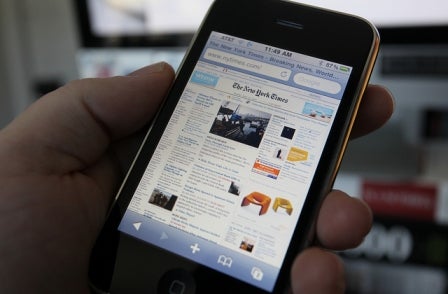
The following questions, or variations thereof, come from a student putting together a research project into the impact of mobile on news; specifically smartphones and more specifically Apple’s iPhone. He’s looking at how the iPhone has influenced the production, distribution and consumption of news.
Below are some initial thoughts to some interesting questions.
1. Why did people start reading news on mobile devices? And when?
Why? Because they could. News on mobile devices is convenient, portable and near real-time. The benefits and attractions were immediately apparent.
When? As soon as mobile phones were internet-enabled and, in a limited sense, even earlier. In other words a long time before the iPhone came along in the summer of 2007. WAP (Wireless Access Protocol) phones date back to the late 1990s/early 2000s and were a precursor to the smartphone. Prior to that online publishers used text messages (SMS) to disseminate the latest news in 160 characters, often making tidy profits in subscriptions along the way. Although it’s tempting to see the iPhone as year zero for mobile internet, people were reading news, getting the latest football scores and checking stock prices a long time before.
2. How has the technology since the first iPhone changed the way we consume news on devices?
It has changed consumption patterns across the day and across the week (see question 5 in part two of this post for more) but it has also changed the means by which we access news. In at least the following four ways:
Most obviously it has heralded the introduction of the app, effectively a creation born out of the iPhone. Newspaper and magazine apps offer the publisher a means of charging for content that their websites don’t, in general terms, allow. Meanwhile, apps offer readers a magazine/newspaper-like experience and the ability to download and read offline.
The smart device has also given rise to social readers like Flipboard, Zite and Google Currents. These are services that aggregate content from multiple sources and display it all in one place. Users can subscribe to their favourite titles and read it offline, again a major attraction.
Meanwhile, the popularity of smartphones such as the iPhone, has coincided with surge in usage of social media. Cause and effect is pretty difficult to establish and it’s probably futile to do so, but it is fair to say that smartphones and tools like Twitter – which has become some people’s first stop for breaking news – are complementary technologies. Last June, Twitter said that 60 per cent of its then 140 million active users access the service through mobile. That number is likely to have risen since.
Finally, smart devices have informed website design. Responsive sites, built in HTML5, work on a small screens in a way that traditional sites don’t – no more pinch and scroll; instead text, images, components and even adverts that respond to the size of the device. An improved user experience is likely to lead to greater usage.
3. Why do you think Murdoch's tablet-only newspaper 'Daily' failed?
Because it spent too much and made too little. For something (possibly) a little more useful, here’s a piece from last December.
In the second part of this blog post: how has newswriting changed since the first iPhone? And how have smartphones changed the way we read news each day to keep updated?
Email pged@pressgazette.co.uk to point out mistakes, provide story tips or send in a letter for publication on our "Letters Page" blog
